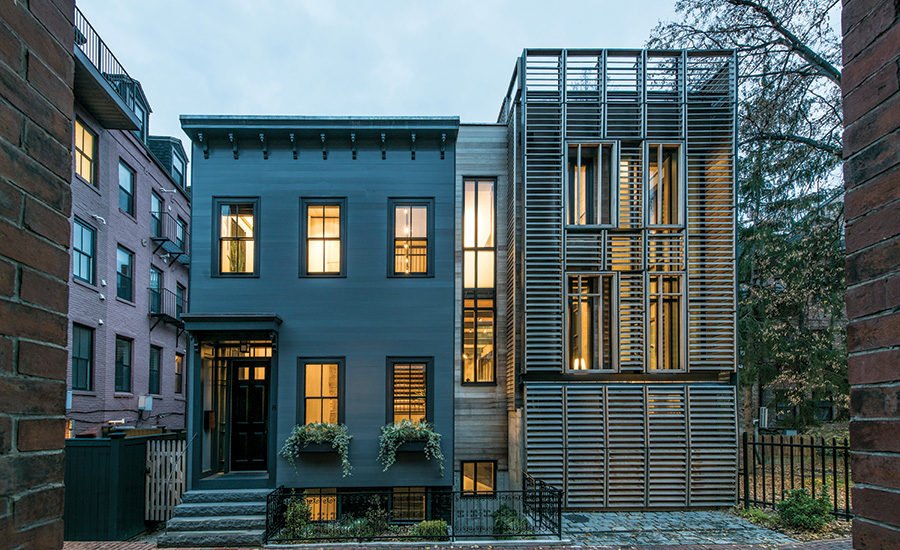#8965. Dual-Faced Façade: A Dialogue Between Tradition and Modernity in an Urban Townhouse
Here we see an excellent example of harmonious combination of traditional architecture and modern solutions in an urban context. The façade presents an interesting dialogue between two stylistic approaches: a classic townhouse on the left side and a contemporary extension on the right.
The left part of the façade is executed in a restrained blue-gray palette with traditional elements: symmetrically arranged windows with classical proportions, decorative window frames, and elegant flower boxes beneath the first-floor windows that add liveliness to the austere exterior. A cornice with decorative brackets completes the composition, referencing historical architectural traditions.
The right section represents a modern interpretation of urban housing with metal louvers creating a rhythmic pattern on the façade. These vertical elements serve not only a decorative function but also a practical one—regulating sunlight penetration into the rooms while ensuring privacy without sacrificing visual connection with the surrounding environment. Large windows with warm interior lighting create a contrast with the metal screen.
Particularly noteworthy is the junction between the two parts of the building, where the architect skillfully navigates the transition from traditional to contemporary through a shared color palette and proportional relationships. The nighttime setting emphasizes this connection—warm light from within unifies both sections into a single composition.
For one's own home, similar techniques can be employed: contrasting material combinations (stone/brick with metal), playing with textures, vertical louvers to create a dynamic façade, and thoughtful lighting that highlights architectural features in the evening. Flower boxes on the façade are a simple yet effective way to add life and individuality to the exterior.
